Formed in March 2015, Crate Free USA is a not-for-profit 501(c)(3) corporation.
Our Mission is to reduce the suffering of animals on factory farms by raising awareness and initiating campaigns that ask retailers to eliminate the worst abuses like gestation crates from their supply chains.
Ways you can help take action
Learn more about the growing movement to end one of factory farming’s cruelest practices: gestation crates.
Throughout history our livelihood has been interwoven with animals. People have harnessed animal muscle power and used animals’ bodies for fuel, skins, food, and countless products allowing people to thrive. Linda Kalof’s shares some fascinating, but also gruesome, history in her book Looking at Animals in Human History (2007).
Any way you look at it, there has been a tremendous amount of animal exploitation in human history.
Animals in Antiquity
In early history, 5000 BC – 500 AD, animals were used intensively for their muscle power, as draught animals to pull plows or sleds with blocks of limestone for construction.
Animal muscle power was also needed in times of war. Horses carried soldiers and pulled chariots in battle and animals were sometimes used as weapons of war. The ancient warrior Hannibal tied sticks to the horns of cattle and set them ablaze to create diversion during his invasions. Elephants were also drawn into military conflicts though less successfully.
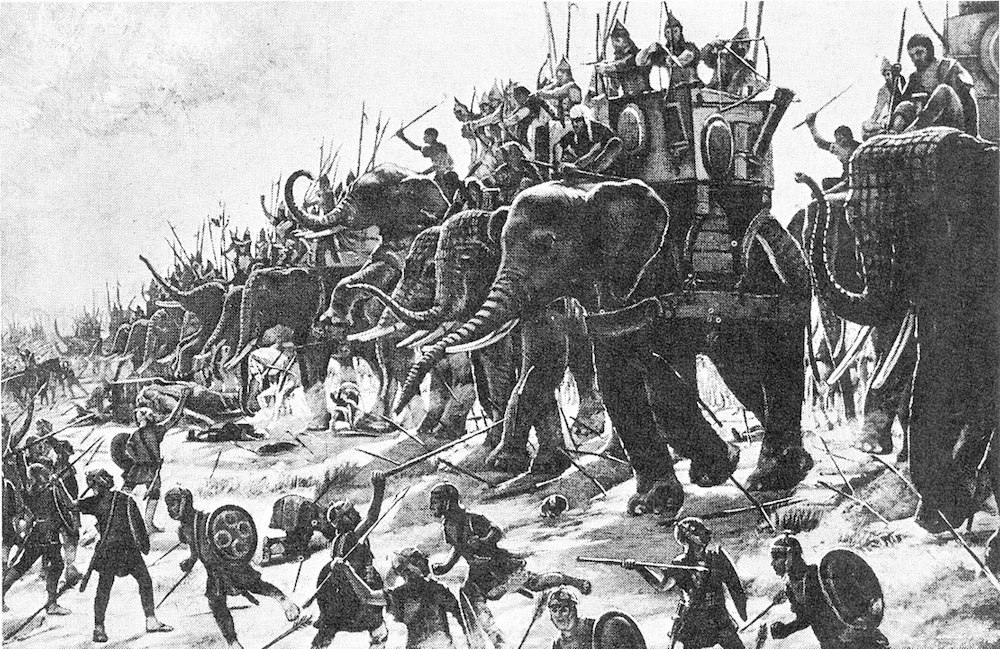
Carthaginian war elephants by Henri-Paul Motte – Public Domain
And animals in ancient Rome were often used for entertainment in the Colosseum. Animals were kept below the arena floor and hoisted up for slaughter, or starved and goaded into attacking criminals or Christians in the Colosseum to amuse the crowds.
Animals in the Middle Ages
During the Middle Ages (500-1400) life was filled with fear of violence, pestilence and disease. Animals were often blamed for human illness. Dogs and cats running free in the villages were apt to be scapegoated for spreading the plague so were frequently hunted or burned.
Medieval villages often used animal baiting for entertainment of the public at festivals and holidays. Baiting involved securing an unfortunate animal, usually a bear, horse or bull, to a stake to prevent escape and then subjecting it to attack by a pack of trained dogs.
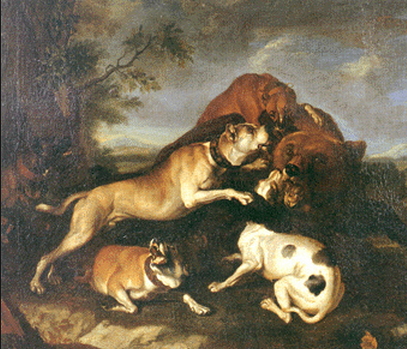
Bear-bating by Abraham Hondius
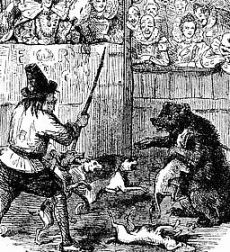
Public executions of people were also popular at the time. Animals, too, were also sometimes accused and convicted of crimes and sentenced to public hanging or worse. Pigs were often the focus of these executions. Because swine in this era were not harnessed or controlled like other farm animals, free roaming pigs sometimes attacked children in Medieval villages.
Animals in the Renaissance
During the Renaissance (1400-1600) people became more curious about how nature and biology worked. Farmers learned more ways to breed and raise domestic stock animals which led to a sharp rise in the consumption of meat during the fourteenth and fifteenth centuries. In addition to consumption, animals were used as a way of conferring status.
Trophy hunting was a popular way to display the power and status of men, but much of it had to be done under artificial conditions, using game animals who were enclosed in parks or herded into nets due to fewer wild animals available to hunt. People continued to fear the plague and often persecuted free roaming dogs or cats suspecting them of disease.
Karlof reports one horrendous event in May of 1636 when 3720 dogs were killed in one city alone. Many dogs and cats were sacrificed because people didn’t realize that the more serious culprit in the spread of disease was the fleas carried by village rats.
The fascination with animal baiting continued, with lame horses, lions, badgers and bulls being tied to a stakes and tormented by trained dogs for the pleasure of onlookers. Kalof writes that bears were often blinded by the dogs and would be flogged by humans as yet another form of entertainment.
Changing views on Animals in the Enlightenment
The Enlightenment (1600 -1800), brought some awareness of animal cruelty to light. Michel de Montaigne made an eloquent case of animal welfare sharing his belief that animals had cross-species communication and were capable of acts of kindness and reciprocity.
Unfortunately, Rene Descartes also famously argued at the time, that animals were neither rational nor moral and were, in fact, not even conscious! Tragically for the animals, he asserted that they could not even feel pain. Armed with this new “mechanistic view” of animals as machines, vivisection became a popular practice for early scientists and was often done in public view.
Animal blood sports such as staged fights between bears and mastiffs or between bulls and lions were staged for entertainment. This era also saw a rise in some of the street performance of trained animals. A traveling show might bring dancing bears to the village or monkeys dressed in human clothing. Sadly this still continues today in many parts of the world.
The views of animals were often reflected in portraiture of the time. Karlof notes the frequent paintings of dead animals in butcher shop scenes, or hunting scenes may have reflected anxiety and a preoccupation with thoughts of death that was prevalent at the time. These images also displayed the prowess and power of the hunter. Many pedigreed livestock were also painted to enhance the status of their owners.
Animals in the Modern Era
In the Modern era (1800-2000’s) people began to develop more concern for animal welfare in the U.S. and Europe. In 1822, an animal protection act was passed which prohibited the mistreatment of horses, asses, mules, cattle, oxen, sheep and related animals used in farming and transport. The Society for the Prevention of Cruelty to Animals was founded in 1824 and a decade later laws prohibited animal baiting.
But society continued to rely on animals for food and as sources of power to pull wagons, and farm implements, or to drag carts of coal or minerals in the mines. Many animals continued to suffer torment by abusive drovers enduring long periods of hunger and thirst before a painful death at the slaughter house.And while mechanization has freed many animals from their role of beasts of burden, the mechanization of farming has brought new torments. Animals often endure intense forms of confinement, and painful practices such as castration, tail docking, or teeth clipping. Many of the more modern laws focused to prevent cruelty toward animals are focused on animals kept as pets, and do not apply to farm animals.
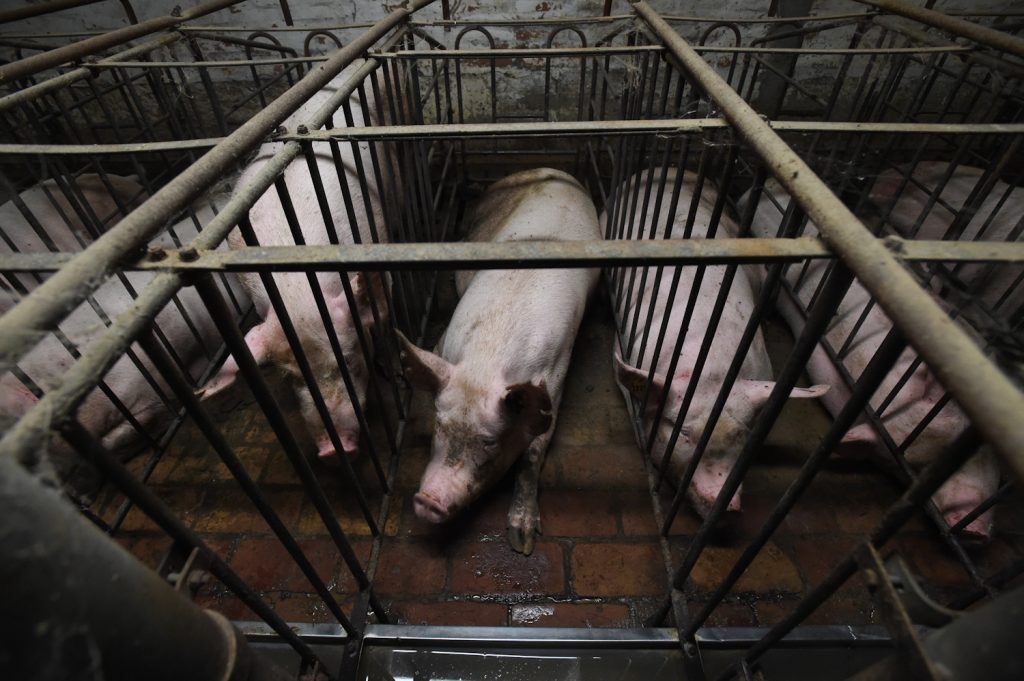
Pig farming Italy – Jo-Anne McArthur/WeAnimals.org
In his book, Some We Love, Some We Hate, Some We Eat: Why It’s so Hard to Think Straight About Animals, Hal Herzog notes that our views about eating animals are strongly shaped by our culture. Americans are typically outraged by the idea of consuming dog meat since dogs are popular pets. But dogs have been on the menu for thousands of years in different places around the world and continue to be so in many places in Asia.
In his book, Homo Deus: A Brief History of Tomorrow, author Yuval Noah Harari talks about the impact of humans on the world’s animal life. Looking solely at the numbers, domesticated farm animals appear to be flourishing. But despite their numbers which make them over 90% of the large animal population in the world, most domestic farm animals suffer greatly. These farm animals live in bodies evolved to live in the natural world, yet many are confined in small, dark, smelly enclosures and fed foods they would not seek out on their own. Despite the advances in science and technology the lives of intensively farmed animals in the modern era are often filled with fear, pain, and boredom.
Modern Animal Abuses
And in this modern era animals continue to be source of entertainment in zoos and marine parks. The blood sport of animal fighting, now illegal, is mostly disappearing into the shadows, but it still exists even right here in Chicago.
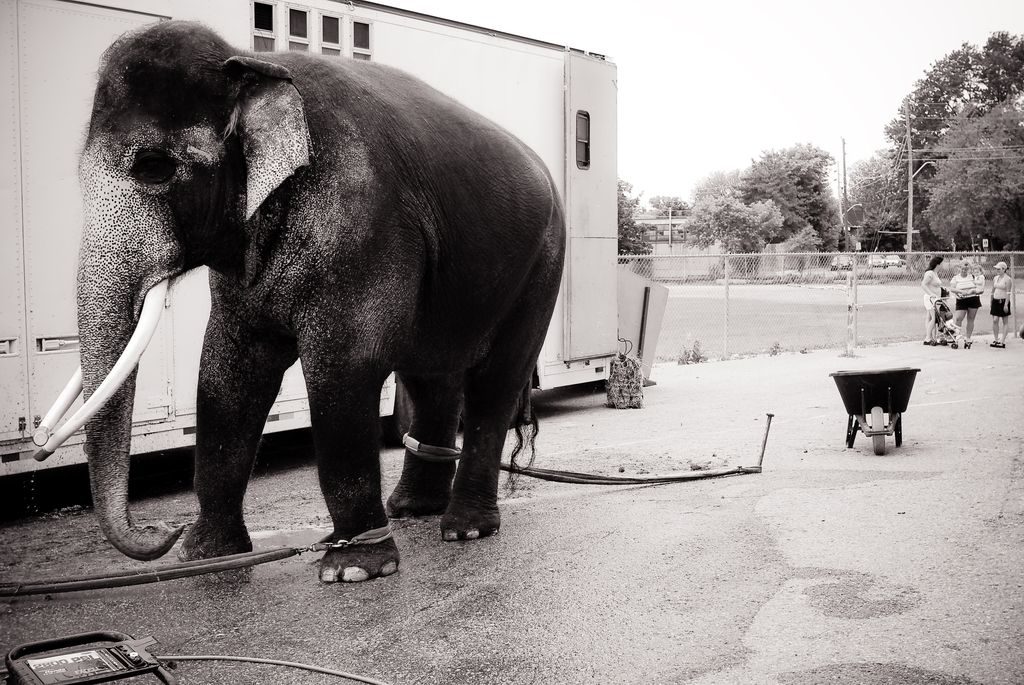
Elephant circus – Jo-Anne McArthur/Weanimals.org
A more current example of using animals for entertainment might be Sea World, which opened in 1964. Sea World promoted its performing whale shows framed in a narrative that expressed reverence and concern for nature. However documentaries such as “Black Fish” and organizations such as the Animal Welfare Institute have publicized the forms of exploitation and suffering that exist in these modern theme parks and through keeping fish in captivity. People in the modern era are becoming more sensitized to the plight of animals who are exploited for our food and entertainment.
Are we too late?
In recent years, more and more people are becoming aware of the exploitation of animals on industrialized farms, reducing meat intake or becoming vegetarian. Even Burger King has started offering a vegetarian burger option. Ironically, much of our growing concern about animal exploitation may be coming too late.
A recent 2019 UN report notes that one million species are now on the brink of extinction due to climate change, over-hunting, pollution and habitat destruction. In the growing shadow of factory farms, traditional family farmers with humane practices are struggling to survive.
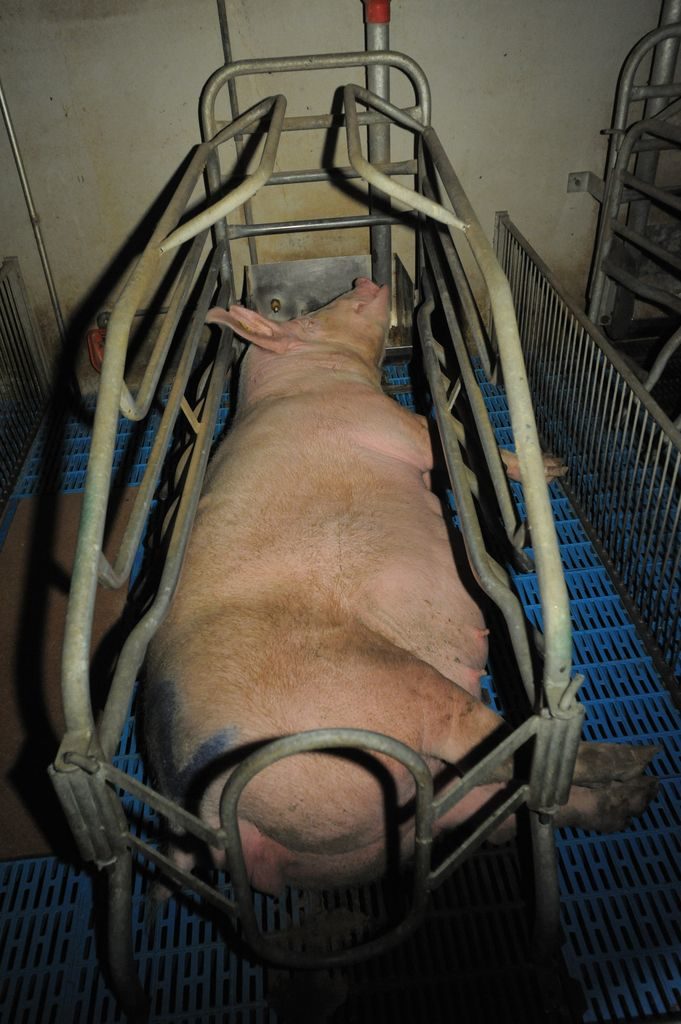
Pig gestation crate – Jo-Anne McArthur/WeAnimals.org
We may have exploited animals and their habitat to such an extreme that we are causing a mass extinction event. But for the time being, we owe much of our way of life and very existence to the other animals in the world. Perhaps we can find a way into the future that allows us to share this world with other creatures rather than exploit them to our mutual demise.
For some ways you can help, please take action.
Author bio: Kim Hays is a clinical psychologist, formerly at Illinois State University, but currently in private practice part-time. She and her husband enjoy time with their frolicking Irish Setter, Bailey. Kim has volunteered for her local Humane Society. She and her husband have cared for two other rescue dogs before Bailey came along. She enjoys reading about animals, evolution, history and psychology.
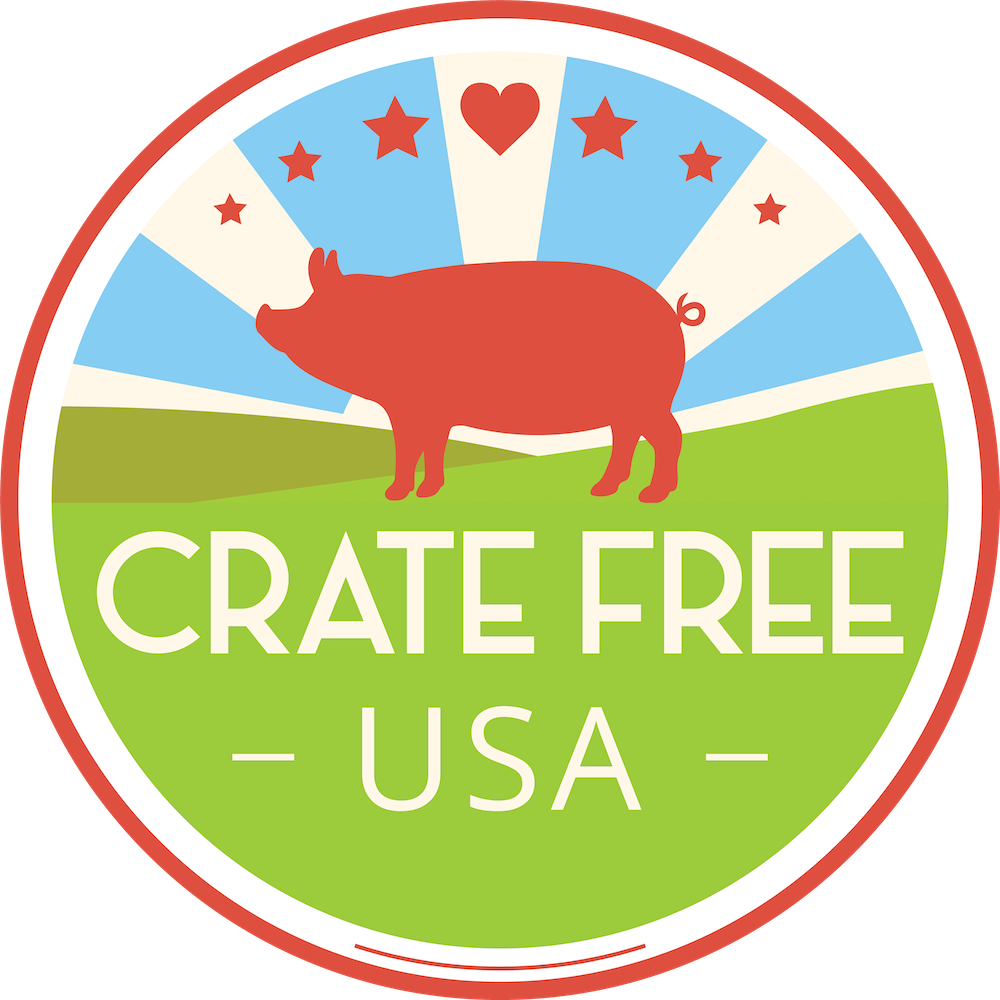
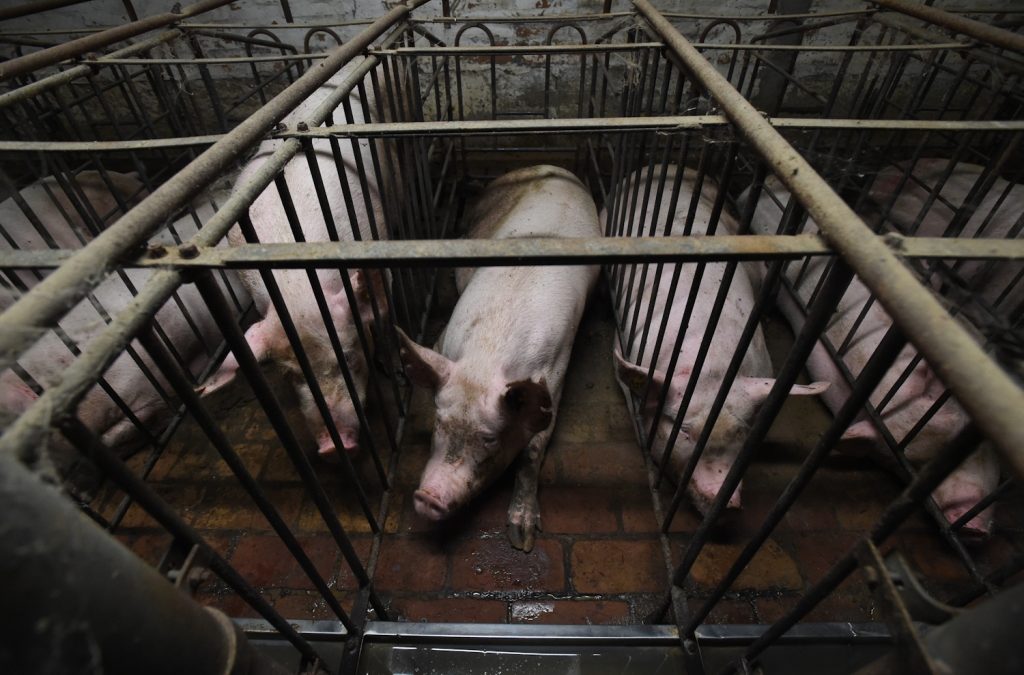

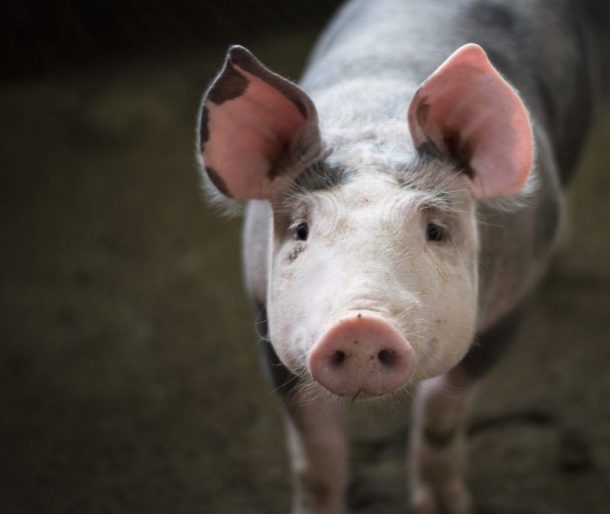




This was very helpful
A very interesting article, thankyou.
OMG I am using this for an essay and this is super helpful.
Im using this for a google presentation so helpful thanks
This has saved my life!!
am using it for my power point presentation, so helpful thank you
Please be sure to give credit back to our name and URL for any info you use here. Thank you.
I need an actual name to do proper citation. Do you have the names of the writers other than “admin?”
In the first paragraph, we are given the name “Linda Kalof”, however, that is all based on what I found. Hope this helps!
Used this for an essay- this article was clear, well-written, and exactly what I needed. Thank you!!
I just got done reading the execution about Topsy the elephant and the hanging of Mary the elephant. This article followed and gave me some hope on humans today. People were so cruel and still can be. It breaks my heart.
It was so sad that us humans would do such cruel stuff back then and now.
It was so sad that us humans would do such cruel stuff back then and now.
This was so useful for my school pyp exhibition
I look forward to a future when humans wake up and realize that all animals are innocent sentient beings who don’t want to be used as entertainment, eaten, worn, raped, exploited, abused, gassed, electrocuted alive for their skin, mistreated. They deserve to live happy lives, just like us. Go vegan!
although finding this article very interesting there is a place for hunting hunting is conservation if there was no hunting many species would over power and cause smaller species to die out i understand there has been instances where people have over hunted but now there is protection plans and numbered amounts of animals aloud to be taken to support families being vegan is not the answer and never should be